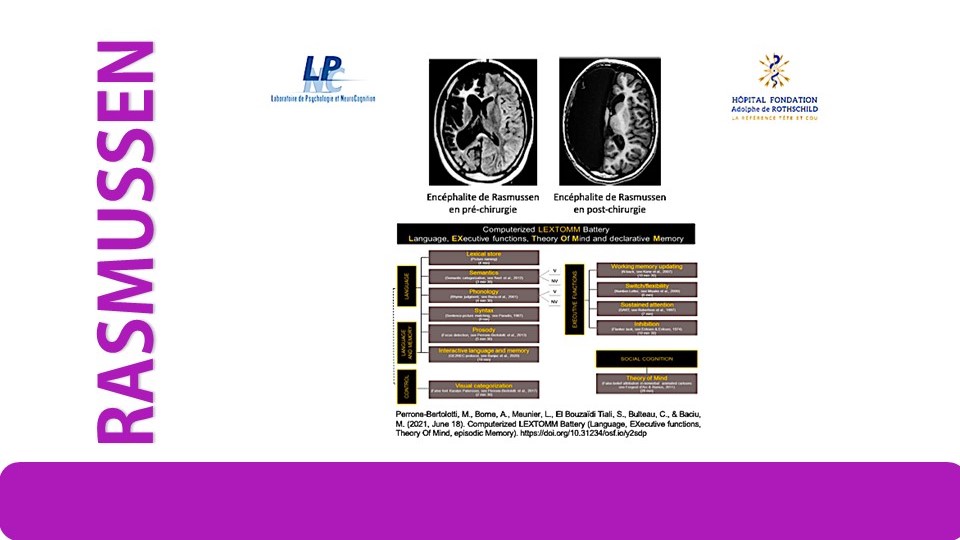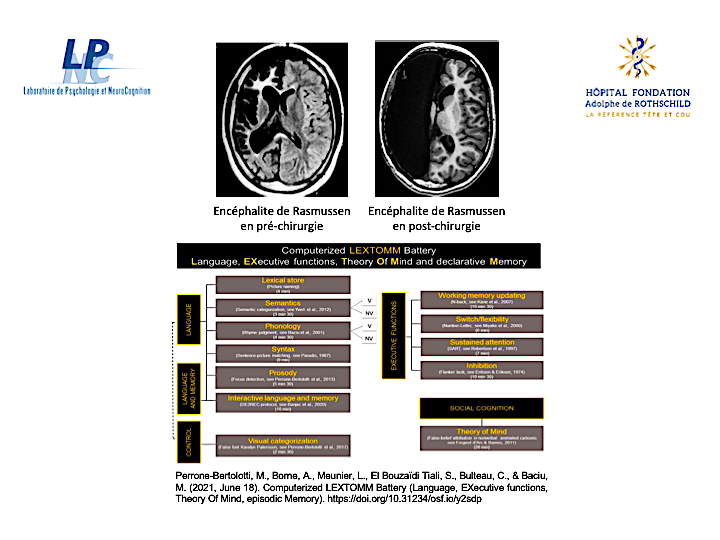- Share
- Share on Facebook
- Share on X
- Share on LinkedIn
Equipe Langage, Research

Multimodal Assessment of Neurocognitive Functioning and Brain Reorganization After Hemispherotomy in Patients With Rasmussen Encephalitis
Monica BACIU
Marcela PERRONE-BERTOLOTTI
Christine BULTEAU
Doctorante: Anna BORNE
Rasmussen encephalitis is a chronic autoimmune disease characterized by progressive unilateral hemispheric atrophy. This pathology causes drug-resistant partial epilepsy and is accompanied by progressive, disabling neurocognitive disorders. Due to its drug resistance, the only curative treatment is hemispherotomy, a functional disconnection between the hemispheres. Given the young age of surgery, patients with Rasmussen are expected to benefit from significant brain reorganization that allows significant recovery of cognitive functions, even if it occurs unevenly, depending on the specific developmental trajectories of these functions. and individual cognitive and cerebral reserve. In addition to the cognitive recovery observed in adulthood, different models of brain reorganization have also been described. Therefore, it is of particular interest to understand the strategies recruited by these patients due to neuroplasticity. Overall, this research project aims to evaluate both the cognitive outcome and the reorganization of brain networks in adult patients with Rasmussen encephalitis after hemispherotomy performed during childhood. A multimodal approach will be used, combining experimental psychology and neuropsychology to assess a wide range of cognitive functions (language, executive functions, theory of mind and memory) and clinical scores, as well as fMRI in resting state and DTI-MRI to measure the connectivity of functional and structural networks of the functional hemisphere, respectively. The originality of this work also consists of the development of a new multi-cognitive battery specifically adapted to this population (LEXTOMM, Perrone-Bertolotti, M., 2021). We thus wish to improve our understanding of patients with Rasmussen encephalitis by describing cognitive and cerebral phenotypes, with new directions for cognitive rehabilitation and pre-habilitation to ensure their best possible recovery.

- Share
- Share on Facebook
- Share on X
- Share on LinkedIn
